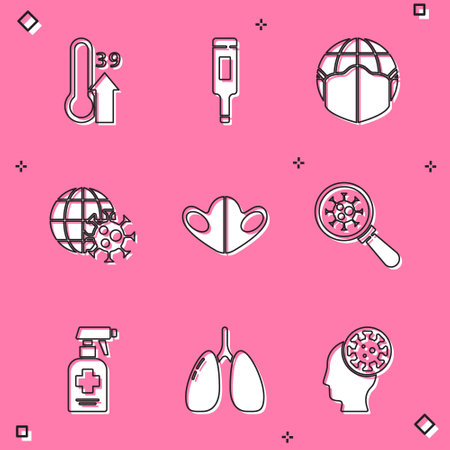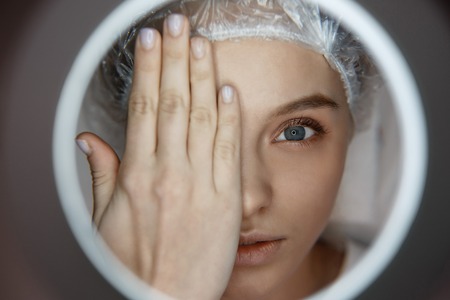Introduction to Post-Microneedling Skincare
Microneedling has become increasingly popular across the UK, not just in major cities like London and Manchester but also in smaller communities seeking professional skincare solutions. As this treatment gains traction, it’s essential to recognise that the journey doesn’t end once you leave the clinic—aftercare is a critical component of achieving optimal results and maintaining skin health. Proper post-microneedling skincare helps support the skin’s natural recovery processes, minimises side effects such as redness or sensitivity, and maximises treatment benefits like improved texture and tone.
In the context of UK skin types and our unique climate, there are particular aftercare considerations worth noting. The UK’s often damp, cool weather can affect how skin heals after microneedling; for example, increased humidity may influence hydration needs, while chilly winds and fluctuating temperatures can exacerbate dryness or irritation. Additionally, British skin tones are diverse—from fair complexions prone to redness, to darker tones that may be more susceptible to pigmentation changes—so selecting products suitable for your specific needs is paramount. This article will explore why tailored post-microneedling care matters here in the UK, highlighting common concerns and what to look out for when choosing aftercare products available locally.
Essential Ingredients to Look For
When selecting post-microneedling products in the UK, it’s crucial to consider ingredients that not only support skin recovery but also address sensitivities commonly found among British skin types and adapt to the nation’s often unpredictable weather. Microneedling temporarily disrupts the skin barrier, making it essential to prioritise formulas that soothe, hydrate, and protect without causing irritation.
Key Ingredients for Healing and Hydration
| Ingredient | Main Benefit | Why It’s Ideal for UK Skin |
|---|---|---|
| Hyaluronic Acid | Deep hydration and plumping effect | Counters dehydration from central heating and cold winds |
| Panthenol (Vitamin B5) | Soothes and accelerates healing | Gentle on sensitive skin prone to redness, especially in damp climates |
| Ceramides | Strengthens skin barrier function | Protects against environmental stressors typical of urban UK areas |
| Aloe Vera Extract | Reduces inflammation and calms irritation | Natural option suitable for reactive or delicate British complexions |
| Madecassoside (from Centella Asiatica) | Promotes repair and soothes sensitivity | Supports healing for those with eczema or rosacea tendencies common in the UK |
| Squalane | Nourishes and locks in moisture without heaviness | Non-comedogenic; works well year-round regardless of season changes |
| Zinc Oxide (in SPF) | Physical sun protection post-procedure | Essential even during overcast British days due to UV exposure risk after microneedling |
Avoiding Common Irritants Post-Microneedling
British consumers should be particularly wary of fragrances, alcohol-based formulations, and harsh exfoliants immediately following microneedling. These can exacerbate sensitivity and delay healing. Instead, opt for minimalist ingredient lists focused on hydration and barrier repair.
The Impact of British Weather on Recovery Choices
The UK’s variable climate—ranging from dry indoor air in winter to high humidity in summer—demands versatile skincare. Products containing humectants like hyaluronic acid are indispensable, while occlusive agents such as squalane or ceramides shield the skin against wind and pollution. By prioritising these ingredients, you can foster optimal recovery and maintain comfort regardless of the season.

3. Top UK-Available Soothing Serums
When it comes to post-microneedling care, choosing a suitable serum is paramount for soothing the skin and supporting optimal recovery. The UK market offers a range of serums designed to address post-procedure sensitivity, redness, and dryness. Below, we examine some of the most trusted options, considering their efficacy, texture, and value for money.
La Roche-Posay Hyalu B5 Hyaluronic Acid Serum
This French pharmacy favourite is widely available across the UK and has earned a strong reputation for its gentle formulation. The dual hyaluronic acid complex delivers deep hydration without overwhelming freshly treated skin. Its light, gel-like texture absorbs quickly, leaving no sticky residue. In terms of value, it strikes a fair balance between cost and performance—making it a reliable staple for many after microneedling.
Medik8 Hydr8 B5 Intense
Medik8, a British-born brand, offers this potent serum that’s frequently recommended by UK skincare professionals. Featuring multi-weight hyaluronic acid and panthenol (vitamin B5), it excels at replenishing moisture reserves and calming irritation. The consistency is slightly thicker but still comfortable on sensitised skin. While positioned at a higher price point, its restorative effect justifies the investment for those prioritising rapid recovery.
Avène Hydrance Intense Rehydrating Serum
Known for its soothing thermal spring water base, Avène’s serum is particularly well-suited for delicate or reactive skin types post-microneedling. It delivers lightweight yet long-lasting hydration and helps reduce tightness or flakiness after treatment. Easily sourced from high street chemists such as Boots or Superdrug, it’s both accessible and affordable—a practical choice for everyday recovery support.
Other Noteworthy Mentions
CeraVe Hydrating Hyaluronic Acid Serum and The Ordinary Hyaluronic Acid 2% + B5 are also commonly found on UK shelves. Both are budget-friendly options that provide basic hydration; however, they may lack the advanced soothing actives present in premium formulations.
Summary
The best post-microneedling serum ultimately depends on individual skin needs and budget considerations. Across the UK, brands like La Roche-Posay, Medik8, and Avène consistently deliver trusted results in terms of efficacy and comfort during the delicate recovery phase.
4. Moisturisers and Barrier Repair Solutions
After microneedling, the skin’s protective barrier is temporarily compromised, making it crucial to choose moisturisers and barrier repair products that support healing without causing irritation. In the UK, there are several reputable options that are readily available both online and in high street shops. Below, I’ve compiled a selection of creams and lotions specifically formulated for post-procedure care, with an emphasis on those catering to sensitive, recovering skin.
Key Considerations for Post-Microneedling Moisturisers
When selecting a product, look for ingredients such as ceramides, hyaluronic acid, panthenol (vitamin B5), and madecassoside. Avoid fragrances, essential oils, or alcohols that may trigger further sensitivity. British dermatologists often recommend products with a minimalist ingredient list to minimise potential reactions.
Top UK-Friendly Options: Comparison Table
| Product Name | Main Ingredients | Best For | Availability |
|---|---|---|---|
| Cerave Moisturising Cream | Ceramides, Hyaluronic Acid | All skin types; barrier repair | Boots, Superdrug, Amazon UK |
| La Roche-Posay Cicaplast Baume B5 | Panthenol, Madecassoside, Shea Butter | Sensitive/irritated skin recovery | Boots, Lookfantastic, Chemist Direct |
| Eucerin Aquaphor Soothing Skin Balm | Pantheol, Glycerin | Very dry or compromised skin | Tesco, Lloyds Pharmacy, Amazon UK |
| Avene Cicalfate+ Restorative Protective Cream | Copper-Zinc Sulphate Complex, Glycerin | Barrier restoration after procedures | Boots, Feelunique |
Expert Tip: Layering Wisely
For optimal recovery post-microneedling in the UK climate—which can be quite changeable—start with a lightweight hydrating serum containing hyaluronic acid followed by a richer cream to lock in moisture. This two-step approach helps prevent transepidermal water loss and keeps the skin comforted during the delicate healing phase.
In summary, sourcing effective moisturisers and barrier repair solutions is straightforward across the UK’s high street pharmacies and online retailers. Prioritise products that are fragrance-free and clinically tested for sensitive skin to ensure your post-microneedling experience remains smooth and complication-free.
5. Sun Protection for British Weather
After microneedling, your skin becomes temporarily more sensitive to environmental factors, and sun protection is crucial—even in the famously overcast UK climate. While the British weather is often grey, UVA and UVB rays can still penetrate clouds and cause damage to healing skin. This makes daily sunscreen application non-negotiable for optimal recovery and long-term results.
Why Lightweight Sunscreens Matter Post-Microneedling
The ideal post-microneedling sunscreen for UK conditions should be lightweight, breathable, and suitable for layering with other aftercare products. Heavy or greasy formulas may clog pores or exacerbate sensitivity, so it’s best to choose sunscreens specifically formulated for compromised skin. Many leading brands offer fragrance-free and non-comedogenic options designed to sit comfortably under makeup or moisturiser—a real benefit given the unpredictable nature of British weather.
Recommended Sunscreen Formulations
Look for mineral-based (physical) sunscreens containing zinc oxide or titanium dioxide, which provide broad-spectrum protection without irritation. Brands like La Roche-Posay Anthelios, Ultrasun Face SPF 30, and Altruist Dermatologist Sunscreen SPF 50 are popular choices among UK skincare professionals. These formulas are praised for their lightweight texture, quick absorption, and non-chalky finish—making them ideal for everyday use post-procedure.
Layering Tips for the UK Climate
Given the frequent rain and humidity in Britain, opt for water-resistant sunscreens that won’t slide off with a sudden drizzle. Reapply every two hours if you’re outdoors, even on cloudy days. For those with particularly sensitive or redness-prone skin following microneedling, tinted mineral sunscreens can also provide an added layer of coverage while protecting against both UV rays and visible light.
In summary, selecting the right sunscreen after microneedling is essential for anyone living in the UK. Prioritise gentle, lightweight formulations that won’t interfere with your skin’s recovery—and remember, consistent protection is key no matter what the British skies look like.
6. Expert and Community Recommendations
When selecting post-microneedling products in the UK, drawing on the expertise of local dermatologists and the collective wisdom of British beauty communities is invaluable. UK-based skin specialists consistently recommend gentle, fragrance-free serums and creams rich in hyaluronic acid and ceramides, with brands such as La Roche-Posay, Avène, and CeraVe often cited for their efficacy and safety. British dermatologists also highlight the importance of avoiding products containing retinol or strong acids immediately after treatment, as these can exacerbate sensitivity.
Meanwhile, real user reviews from UK forums and social media platforms like Reddit’s r/SkincareAddictionUK and beauty blogs reveal a preference for lightweight formulas that absorb quickly, leaving no greasy residue—crucial for the unpredictable British climate. Many consumers report positive experiences with moisturisers such as Eucerin Aquaphor and Medik8 Ultimate Recovery Intense Cream, noting their ability to soothe irritation and support rapid skin recovery.
Community advice frequently includes practical tips tailored to life in the UK: always apply a broad-spectrum SPF, even on cloudy days; avoid heavy make-up for at least 48 hours post-procedure; and opt for mineral-based sunscreens to minimise further irritation. For those navigating the aisles of Boots or browsing online at Cult Beauty, cross-referencing expert endorsements with peer reviews helps build confidence in product choices.
In summary, by combining the recommendations of UK dermatologists with authentic feedback from fellow British consumers, you can assemble an effective post-microneedling routine that prioritises both safety and visible results. This approach ensures your aftercare is not only scientifically sound but also grounded in real-world experience within the UK context.


